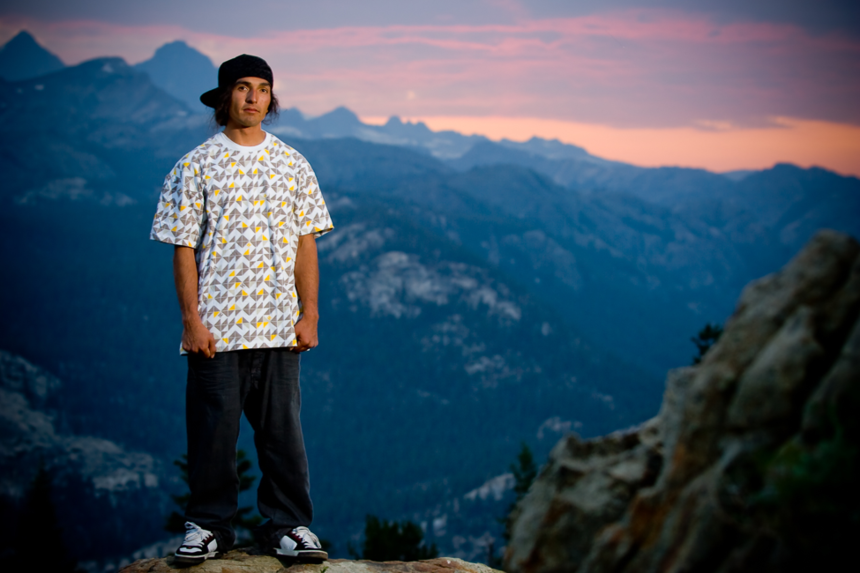 Lonnie Kauk won't stop moving forward. Andrew Miller photo.
Lonnie Kauk won't stop moving forward. Andrew Miller photo.
With the 2009 release of Standard Films’ Black Winter, up-and-coming professional snowboarder Lonnie Kauk looked poised for snowboard superstardom. Hailed as one of the breakout video parts of the year, Kauk–who was one of the driving forces behind DC’s snowboard program–was finding recognition by taking his Mammoth-honed freestyle prowess into the backcountry.
Kauk, a Native American and son of legendary rock climber Ron Kauk, grew up amongst the soaring walls and epic nature of the Yosemite Valley. A direct descendant of Chief Tenaya of the Ahwahneechee Tribe, Kauk’s ancestors have prospered in the Valley for thousands of years. Kauk’s innate connection to his surrounding is palpable, not only in the way he speaks about his endeavors in the wilderness, but in the fluidity and gracefulness in which he approaches those endeavors.
While Kauk’s career was still in a full upswing, he seemingly disappeared from the snowboarding spotlight. After the 2008 economic crash marketing budgets started to rapidly decrease and many of snowboarding's most talented riders found themselves without sponsors. He was dropped from the DC roster and would eventually find himself without any financial support.
Kauk–never one to be defeated–turned to climbing, redirecting his energy into the granite walls that had been an integral part of his youth. Social media started lighting up with Kauk’s free solo and highball boulder escapades. Kauk was on a mission to not only find solace through climbing, but to also follow in his father's footsteps putting up a number of the elder Kauk’s legacy routes.
We caught on with Kauk to talk about growing up in Yosemite, being dropped by his sponsors, and the mental preparation it takes to free solo at an elite level.
Lonnie how are you?
I’m good man, just chilling. I'm working on a climbing project out in Yosemite right now, so I’m taking a few days off. The project is really cool, because my Dad actually put up the first ascent in like 1996.
That’s awesome, can you explain the route a little bit?
Yeah it’s this gnarly crack route that he actually did with pre-placed gear, and I sent it last year with the pre-placed gear, but this year I’m trying to finish it by placing my own gear on lead. With gear in place it’s 5.14B, but by placing my own gear I think it will bump it up to like a 5.14C.
Let’s talk a little bit about your childhood: I was familiar with you because of your professional snowboard career, and didn’t know at the time that you were climbing at an elite level as well. What was your childhood like and how did it shape you into becoming this all-around outdoor athlete?
I was born and raised in Yosemite and I grew up primarily with my mother and my grandparents because my father was always off climbing. We knew about the climbing because we were always around it, but we didn’t really know how Dad fit into that world until we saw the Masters of Stone videos and then it felt like he was a superhero. After we saw our father in the video it wasn’t like we just immediately got super into climbing; everyone was busy and no one was asking little kids to come climbing with them.
Kauk was known for lapping the Mammoth Park from sunup to sundown. Andrew Miller photo.
So is it fair to say snowboarding came before climbing even though you were in Yosemite?
Well we grew up skiing at Badger Pass. We were on the ski team, and really into skiing. I remember seeing guys like Glen Plake and Scott Schmidt and we would go to the mountain and try to emulate those guys. The ski racing had a huge impact on my life, I always thought I’d be a ski racer or something.
How did you eventually transition from skiing to snowboarding?
Mike Hatchett was filming my dad for the Masters of Stone and also working on the Standard TB movies and he sent my dad a few snowboard videos for us to check out. We watched those videos and thought it was the coolest thing ever. After that we wanted to become snowboarders.
And you quit skiing to focus on snowboarding?
Well, I was a pretty good ski racer so I tried to do both for a while so that I could keep my pass, but the ski coach wanted me to focus on ski racing and ultimately took my pass away from me because I wouldn’t quit snowboarding. I always thought that was pretty whack, so after that happened it was just like, we got even more motivated to snowboard all of the time.
Kauk finds solace on another epic route in Yosemite. Andrew Miller photo.
You eventually ended up moving to Mammoth to pursue snowboarding, is that when you first got noticed? How did you start to get attention and pick up sponsors?
Yeah we moved to Mammoth and I was a janitor at the main lodge, so I would shred all day and work at night. Eventually I bought a pass and I would just lap the park, it wasn’t about trying to get sponsored or anything, it was just about wanting to be there as much as possible. Eventually, I made a tape of me climbing and snowboarding and sent it to Hatchett so I think he knew I was hoping to film eventually. Then, I became good friends with John Jackson and a few other guys and they kept telling Mike that he should bring me into the crew. A few seasons went by and I was at Superpark at Keystone and Standard had a filmer there, so I got a few shots and then I got invited on a heli shoot and after Mike saw the footage he agreed to give me a small part in Catch The Vapors. I didn’t have any sponsors so he definitely hooked me up and then helped me shop my part around to different sponsors.
Is that how you got on DC?
Yeah. Sean Lake was at DC and he was super cool. He saw my footage and he just gave me a contract.
I didn’t know anything about sponsors or contracts but luckily Hatchett was there almost like an uncle or something and helped me out. Next thing I know I’m off to Europe and doing trips for DC, before that I had never even really been on a plane.
So what happened next? You were on this crazy upward trajectory in your snowboard career and then all of a sudden you got dropped by DC and it seems like you sort of disappeared from the snowboarding spotlight?
Yeah, everything was going really good and I was coming off of a few years of putting out video parts with Standard. I was climbing in Yosemite and I get a call from the DC team manager and he told me I was going to get an increase in pay and budget and was supposed to send me a contract. A week later he called me back and I could tell something was wrong, and he informed me that they were letting a bunch of guys go and that I was one of them. I was in disbelief, and just asked him if there was anything he could do, and he said no.
The passion was still there and Monster was still hooking me up at the time, and my former manager wanted me to film so he connected me with the People Film guys. I ended up connecting with Chris Benchetler and he was working on a project so he suggested that we film together, so I he helped me film some stuff and Monster and People helped me put out the “Soul Shredder” series. And then the same thing happened; Monster called me and told me they couldn’t do anything. After that it was pretty hard to imagine keeping the dream alive so I was like, “I’m just going to go climb.”
Kauk was on that show up and blow up program at Superpark. Andrew Miller photo.
So was focusing on climbing instead of riding your way of finding solace in a bad situation?
Yeah, I mean I didn’t really lose my passion for snowboarding but I had to sort of backtrack mentally and remember what it was like before I got sponsored. I worked a little bit and got a splitboard from Jones Snowboards and just started hiking all of the lines around June Mountain and I was occasionally doing lines that were gnarlier then what I was filming with Standard.
I did one of my dad’s route called “Crossroad”s around that time, and it has only been repeated by Alex Honnold, so all of the sudden it was like my name was next to Dad’s and Honnold’s in climbing history, and it was like, “Woah, that’s pretty cool.” To this day were the only three people that have climbed that route.
Did that give you a spark to dive into climbing and putting up your Dad’s lines?
Yeah, we went and did “Peace” and then after that we did Crossroads, and it was like this is really cool so we started to look at other lines. We started to look at this one particular route called “Magic Line” and when I asked Dad about it, he told me no one had repeated it. I was putting up some pretty serious highball boulders around the Buttermilks and then did “Ambrosia” (V11).
Then, I was having dinner with one of the guys from Sender films and we were talking about Honnold’s route “Too Big To Flail” and he was like “No one's going to do that after him.” And something just came to me and I knew I was going to do it. I hit up Hatchett and asked if he would be interested in filming it and he pitched it around and Epic TV was down. So we made a full edit out it. It gave me some confidence because I got the second ascent, my name was now next to Honnold's again, it was like, “This is really cool.”
It’s sort of become this father son story in a way because I’ve climbed like all of my father’s routes. I don’t know, I feel like if I had climbed a bunch of random routes I would have had to go put up his routes, I don’t feel like I could have left those undone.
How did you eventually transition into free soloing?
Well, there were all of these legendary stories about John Bachar soloing around the Gorge in Bishop [California], and I was confused about how he was soloing there because it’s sort of a funny place to solo and takes a long time to connect with it. Eventually, it made sense and I was like, maybe I should solo the one that Bachar did. So I did a few of those lines and eventually I did this roof route called “Looney Binge.” It’s the sickest line–it’s like this arching crack that goes through the roof and then goes all the way back to the ground.
How did the people around you react to the free solos. They’re kind of a contentious issue in climbing, no?
Oh man, my friends were freaking out and thought I was nuts. People were coming up to me and handing me ropes and telling me to be careful. People didn’t really know me, so it was kind of a hard time, people think you’re crazy. Even my dad thought I was nuts (laughs).
How do you mentally prepare for free solos?
A lot of visualization and seeing it in your head. You look at the climb and feel a connection to it, and you get on it with a rope and test all of the holds and see if everything is safe–see if anything is flexing and really checking out every aspect of the route with protection. People were worried about this flake in the roof on Looney Binge breaking off, but I got up there on a rope and hung on it and tested and felt confident that it wasn’t going anywhere. In a sense, the climb will tell you if you can do it, it’s never a self-inflicted pressure of “I have to solo because it’s going to be gnarly or look cool.” You can’t get up there and be freaked out and shaky.
On Looney Binge I got super comfortable on it to the point where I would lead it and only clip a few of the clips to just to see how controlled I could be, and I felt really confident in it. We spent so much time on it both mentally and physically that when I got the crux it felt super easy.
Are you getting support from the climbing industry?
No, not really. You would think the climbing industry would be interested especially given the father-son dynamic, but I kind of feel pushed out of the climbing industry. I have tried to connect with a few sponsors, but they don’t respond at all. Evolve does help me a little bit, which is cool, it’s saved the day a few times. It’s nice when people back your vision, but it’s not really even about that. The climbing for me is connecting me with my life before being a sponsored snowboarder.
Kauk feeling the vibrations of another completed route. Andrew Miller photo.
It’s kind of weird though I pitched a project to a company and they didn’t get back to me and then one of their sponsored athletes showed up to the climb I was working on and started trying to send it. I can’t work on the line when another crew is there–it’s like the same etiquette rules as filming in the backcountry. I’ve already done the climb, but wanted to go back and put in the gear and make a video about this journey about the connection with my dad’s climbs. Luckily, our head is in the right place so we don’t really get caught up in that kind of frustration, so Dad and I have been going back and working on placing the gear on lead together, which is really cool.
What projects are you working on right now that we can be on the lookout for?
We are just working on something for this current project. My friend Nathan who I met through John Jackson and who has filmed everything from the Deadliest Catch to The Book of John J came down with Tim Manning and got some epic shots and they are going to help me make a film about sending this route. They know my situation and they support what I’m doing so they are just totally hooking it up, which is so awesome.



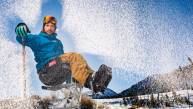
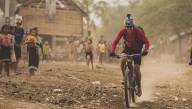

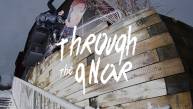
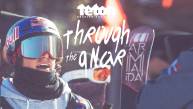
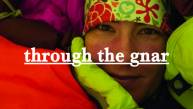
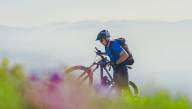
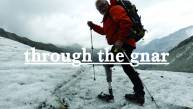
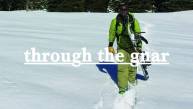
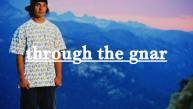

__video_thumb.jpg)
